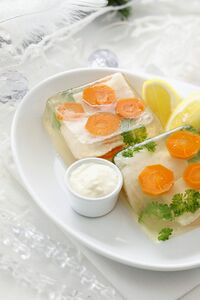Eastern Isles
The United Confederation of the Amber Isles Die Bernsteininseln Micronation | |
|---|---|
|
Flag | |
| Motto: The Shinning Coast | |
| Status | Dependency |
| Capital and | Maznas |
| Official languages | Dolch, Raskian |
| Organizational structure | Presidential Confederation |
• President | Aras Kostas |
| Population | |
• Estimate | 67,321 (2022) |
| Claimed GDP (nominal) | estimate |
• Total | 1,002,129 |
• Per capita | 14,885 |
The United Confederation of the Amber Isles, or simply The Amber Isles, are a small collective of Islands situated within the Western Half of Amber Lake. They were formally core territories of the Kingdom and then the Republic of Baltica, having been the first places ever to be conquered by the Dolch in their great crusades within Baltica. Despite being Independent on paper, they operate closely with the Federation of Baltica, relying on them for both defences and to some extent economy, as they both operate under a single shared market known as the ALEC (Amber Lake Economic Community). The two also share an EEZ, both exploiting one another's waters for fish and natural gas. Collectively, the Amber Isles only possess a population of 67K, most of whom rest on the largest Island of St Casimir, named after Saint Casimir of Niden, who built the first Catholic Monastery in Baltica. The current capital of the Amber Isles resides in Niden, which remains the second largest city, behind St Casimir City.
Etymology
The Amber Isles get their name because of the Amber Lake. Being a collective of Islands within Amber Lake, they also contain many deposits of natural raw amber, which often washes up on the Islands during large tides. However, the four Islands that make up the UCAI all have their respective names, this being ( In order of Size) St Casimir Island, St Bunno Island and the Pebble Islands. St Casimir Island gets its name from Saint Casimir of Niden, a very important priest for Catholic Dolch and Balticans. St Bunno Island gets its name from Saint Bunno of Barm, who governed the Island for half a decade during the collapse of the Order of Baltishtin, and after his services King Fresin I would reward him by naming the Island after him. Lastly, the pebble Islands are two Islands, that get their name because of their small size, being the smallest Islands within the UCAI.
Culture
Religion
Most inhabitants within the Amber Isles Identify themselves as Catholics. This is mainly a result of the Order of Baltishtin, and its continuing legacy within the Islands. After King Fresin I converted to Orthodoxy, he did not enforce his new faith in the Amber Isles, mainly from respect for their former past of being the epicentres of the Catholic faith within Central Argis. As such, they continued to house large populations of Catholics, which only grew as more fled to the Islands to avoid persecution and discrimination on the mainland. They continue to be the only areas with a Catholic majority within Greater Baltica, and many of their old traditions continue to be a key part of the UCAI today.
Language
Similarly to a large part of Southern Baltica, people within the Amber Isles mainly speak Dolch. The lack of any original Ras settlements means that the Amber Isles are one of few areas which were entirely settled by Dolch. However, despite speaking Dolch, many would consider the Dolch spoken on the Amber Isles to be a unique language on of itself. Many have come to call it Amber Dolch or Lake Dolch, and it can be identified by the larger prevalence placed on the "U" and "O" sounds, which are often pronounced deeper and for longer than within typical Dolch. This has proved to be an issue as there is a growing language divide forming between the older population who mainly speak with this "accent" whilst the younger population has been increasingly pushed to learn standard Dolch. As of now, Lake / Amber Dolch has been recognized by the UCAI as a regional language and is a protected language in both the UCAI and Baltica.
Food
The Food found in the Amber Isles mainly consists of fish. Being very small Islands, they typically don't possess enough soil to effectively produce enough agricultural goods to satisfy their needs. This has historically led to many famines, and reliance on shipments from the mainland, especially during the harsh Winter Months. Typical dishes in the Amber Isles consist of fish and poultry and for many years it was customary for Ravens to be consumed by the population, but this has since been banned. The National Dish of the Islands is Herring Aspic, which became especially popular during the late 19th century. Other dishes include stuffed Pike, Pickled Eel Soup and Zander Vegetable Soup. Besides fish, Duck is the primary meat consumed by the citizens of the Amber Isles, especially the Baltic Black Duck found along the coast of Baltica. Lastly, Dairy is also often consumed in the Amber Isles, typically in the form of traditional Baltican Seed Cheese or Baltican Sweet Cheese which is used as a filling in pastries.

